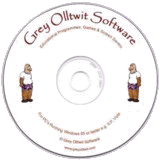
About Us
ADD/ADHD News
ADD/ADHD Books
ADDerwards
Creative ADDers
Donate
Events
GO Games
Information
Links
Natural Remedies
Research
Resources
Support Groups
Whats New
ADHD SOFTWARE
FREE DVD or CD

ADD/ADHD Online Information
ADD/ADHD Information
Tourette Syndrome
Suggested Diagnostic Criteria For Tourette Syndrome In Children
The two most common documents used for the diagnosis of Tourette Syndrome are the DSM IV and ICD 10. The DSM IV is used mostly in the United States though it has been used elsewhere, including the U.K., whereas the ICD 10 is more commonly used in Europe. We have included the descriptions of both, as below.
DSM IV
ICD 10 (European Description)
Note: Consider a criterion met only if the behaviour is considerably more frequent than that of most people of the same mental age.
DSM IV (Diagnostic & Statistical Manual) Tourette Syndrome Diagnostic Criteria:
Diagnostic Criteria
A. Both multiple motor and one or more vocal tics have been present at some time during the illness, although not necessarily concurrently. (A tic is a sudden, rapid, recurrent, nonrhythmic, stereotyped motor movement or vocalization.)
B. The tics occur many times a day (usually in bouts) nearly every day or intermittently throughout a period of more than 1 year, and during this period there was never a tic-free period of more than 3 consecutive months.
C. The disturbance causes marked distress or significant impairment in social, occupational, or other important areas of functioning.
D. The onset is before age 18 years.
E. The disturbance is not due to the direct physiological effects of a substance (e.g., stimulants) or a general medical condition (e.g., Huntington's disease or postviral encephalitis).
Differential Diagnosis
Abnormal movements that may accompany general medical conditions; direct effects of a substance; Choreiform movements; Dystonic movements; Athetoid movements; Myoclonic movements; Hemiballismic movements; Spasms; Hemifacial spasm; Synkinesis; Medication-Induced Movement Disorder Not Otherwise Specified; Stereotypic Movement Disorder; Pervasive Developmental Disorders; compulsions; Schizophrenia; Transient Tic Disorder; Tourette's Disorder; Chronic Motor or Vocal Tic Disorder; Tic Disorder Not Otherwise Specified.
Bipolar Disorder - European Description:
The ICD-10 Classification of Mental and Behavioural Disorders World Health Organization, Geneva, 1992
F95 Tic Disorders
The predominant manifestation in these syndromes is some form of tic. A tic is an involuntary, rapid, recurrent, non-rhythmic motor movement (usually involving circumscribed muscle groups), or vocal production, that is of sudden onset and serves no apparent purpose. Tics tend to be experienced as irresistible but they can usually be suppressed for varying periods of time. Both motor and vocal tics may be classified as either simple or complex, although the boundaries are not well defined. Common simple motor tics include eye-blinking, neck-jerking, shoulder-shrugging, and facial grimacing. Common simple vocal tics include throat-clearing, barking, sniffing, and hissing. Common complex tics include hitting one's self, jumping, and hopping. Common complex vocal tics include the repetition of particular words, and sometimes the use of socially unacceptable (often obscene) words (coprolalia), and the repetition of one's own sounds or words (palilalia). There is immense variation in the severity of tics. At the one extreme the phenomenon is near-normal, with perhaps 1 in 5 to 1 in 10 children showing transient tics at some time. At the other extreme, Tourette's syndrome is an uncommon, chronic, incapacitating disorder. There is uncertainty about whether these extremes represent different conditions or are opposite ends of the same continuum; many authorities regard the latter as more likely. Tic disorders are substantially more frequent in boys than in girls and a family history of tics is common.
Diagnostic Guidelines
The major features distinguishing tics from other motor disorders are the sudden, rapid, transient, and circumscribed nature of the movements, together with the lack of evidence of underlying neurological disorder; their repetitiveness; (usually) their disappearance during sleep; and the ease with which they may be voluntarily reproduced or suppressed. The lack of rhythmicity differentiates tics from the stereotyped repetitive movements seen in some cases of autism or of mental retardation. Manneristic motor activities seen in the same disorders tend to comprise more complex and variable movements than those usually seen with tics. Obsessive compulsive activities sometimes resemble complex tics but differ in that their form tends to be defined by their purpose (such as touching some object or turning a number of times) rather than by the muscle groups involved; however, the differentiation is sometimes difficult.
Tics often occur as an isolated phenomenon but not infrequently they are associated with a wide variety of emotional disturbances, especially, perhaps, obsessional and hypochondriacal phenomena. However, specific developmental delays are also associated with tics.
There is no clear dividing line between tic disorder with some associated emotional disturbance and an emotional disorder with some associated tics. However, the diagnosis should represent the major type of abnormality.
F95.2 Combined vocal and multiple motor tic disorder [de la Tourette's syndrome]
A form of tic disorder in which there are, or have been, multiple motor tics and one or more vocal tics, although these need not have occurred concurrently. Onset is almost always in childhood or adolescence. A history of motor tics before development of vocal tics is common; the symptoms frequently worsen during adolescence, and it is common for the disorder to persist into adult life.
The vocal tics are often multiple with explosive repetitive vocalizations, throat-clearing, and grunting, and there may be the use of obscene words or phrases. Sometimes there is associated gestural echopraxia, which also may be of an obscene nature (copropraxia). As with motor tics, the vocal tics may be voluntarily suppressed for short periods, be exacerbated by stress, and disappear during sleep.
ICD-10 copyright © 1992 by World Health Organization. Internet Mental Health (www.mentalhealth.com) copyright © 1995-1997 by Phillip W. Long, M.D.
Back to Information
Home About Us ADD/ADHD News ADDerwards Advertising Books Contact Us Creative ADDers Donate
Events Forums Information Links Natural Remedies ADDers.org News Research Resources Search adders.org
Site Map Social Stories Sponsor Events Student/Researchers Support Groups Supporters
Join us on....

ADHD SOFTWARE
FREE DVD or CD
